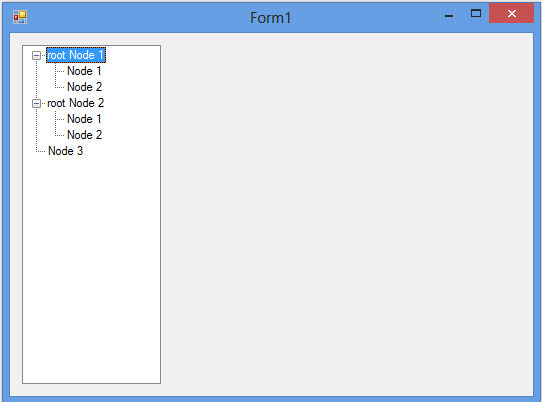TreeView displays a
hierarchical collection of labelled items to the user that optionally contains
an image. Microsoft is also using treeview in left side of windows explorer
from the time of windows 98 till now.
Now
in this article I am going to bind this treeview through a database table
having following properties:
Create
a database having single table i.e. TreeNode1 as I have described in my previous
post “How to create database using Entity Framework”. To bind treeview to table there should be some records in our table Treenode1, so let add some entries to
database like:
Now
to bind treeview with table TreeNode1 write
following code in our Form1’s constructor
Here
in the first statement I got all the records which have Parent key = 0 i.e.
they will be our root node. Now one by one we will check if any node in
database have this node as its parent node, if any, then create that new node
to its child node.
At
the last add that root node to treeview and that is it. I have a screenshot
also as an example.
Download source code.





